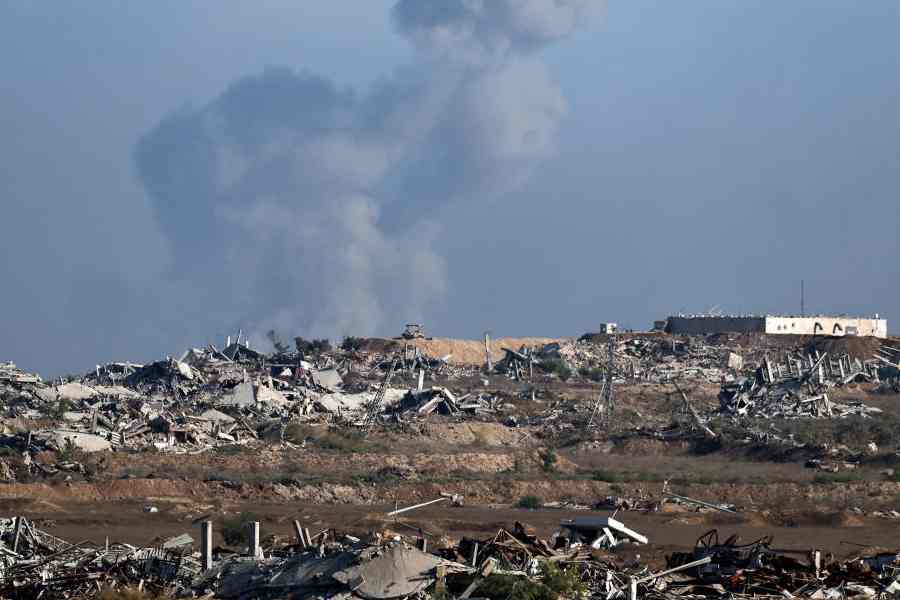
Calcutta: Bengal's rosogolla is now officially "Banglar Rasogolla", a geographical indication (GI) tag that bestows on Nabin Chandra Das's creation a status hitherto enjoyed by only one other sweetmeat from the state: the Joynagar Moa.
Metro highlights what a GI tag is all about and why it matters.
What does the abbreviation "GI" mean?
GI is a sign used on products of specific geographical origin that attain qualities or gain a reputation because of that. To be marketed as a GI-marked product, any consumer item must have a sign or a logo identifying its place of origin.
What does the tag mean for Banglar Rasogolla?
Post-GI tagging, Banglar Rasogolla will be treated as distinct from any other sweetmeat that looks or tastes like it. This will be done with a logo on the packaging, just like that for Darjeeling tea.
How long is a GI tag valid?
A GI tag is valid for 10 years. It can be renewed for a further period of 10 years. If a registered GI tag for a product is not renewed, it is liable to be removed from the register of the controller general of patents, designs and trademarks under the Union ministry of commerce and industry.
Does the new status mean Banglar Rasogolla can be made only in Bengal?
Yes. A geographical indication is used to identify goods having special characteristics originating from a definite geographical territory. So, Bengal has the exclusive rights to Banglar Rasogolla.
Does it mean Banglar Rasogolla can be sold only in Bengal?
No. It can be sold anywhere in the world. But the product must have the GI logo assigned to it.
Does it mean Odisha or any other state cannot make or name a similar sweet rosogolla or rasgulla?
Odisha can stake claim to a GI tag for its Pahala rasgulla. Just that any other variety of the rosogolla cannot be called Banglar Rasogolla.
How is Banglar Rasogolla different from Pahala rasgulla?
Banglar Rasogolla, according to the application for GI status, is usually white or off-white and varies between 3.7cm and 6.2cm in diameter. It is spongy, fluffy and has a smooth texture "with less chewiness". In comparison, Odisha's Pahala rasgulla has a brownish colour, is less soft and lacks the sponginess of the Bengal sweet.
How did Bengal stake claim to the GI tag?
"We produced documents to prove how my great great grandfather, Nabin Chandra Das, invented the rosogolla in 1868 in a shack on Chitpore Road," said Dhiman Das, director of KC Das Pvt Ltd.
The Bengal government quoted references to a sweetmeat resembling the rosogolla in the Chaitanya Charitamrita, an early 17th century compilation of verses depicting the glory of Chaitanya Mahaprabhu.
The submission also contained a reference to the 1896 poem Rasikata by Rakhaldas Adhikari. It presented a comparative analysis of Banglar Rasogolla with other varieties. While there is no mention of other states, sources said the basic comparisons were with similar varieties of sweets popular in Jharkhand and Odisha.
How does a product obtain a GI tag?
An application needs to be filed in the office of the controller general of patents, designs and trademarks. A consultative group on the product for which a GI tag has been sought meets to discuss the merits of the application. If the panel is satisfied with the information, the application is "advertised" in the geographical indications journal. If anyone has any objection to it, the individual, organisation or state has four months to counter the application.
The product automatically gets the GI tag after four months, provided nobody has challenged it. A certificate follows.
What are the other products from Bengal on the list?
Ten products exclusive to Bengal have received GI tagging so far. They include the Joynagar Moa, mango varieties Laxman Bhog, Khirsapati (Himsagar) and Fazli, Santiniketan leather goods, Santipur, Baluchari and Dhaniakhali saris and Nakshi Kantha. Darjeeling tea was the first Indian product to obtain a GI tag.
Odisha rival
Odisha has yet to apply for a geographical indication (GI) tag for Pahala rasgulla.
The central government’s Cell for IPR Promotion and Management (CIPAM) said in a tweet on Tuesday: “Banglar Rasogolla from West Bengal gets Geographical Indication (GI) tag. It is a pure white, spongy ball of ‘Chhana’ dipped in light sugar syrup.”
Finance minister Sashi Bhusan Behera clarified that the process was on to get GI tag for the Pahala rasgulla.
Speaking to Metro, Behera said: “We are yet to submit our application to get GI tag for our rasgulla. A committee is working on the application. Once it is ready, we will apply for the GI tag.”
With eminent Jagannath cult scholar Asit Mohanty as its head, the state had formed a committee last year to get the GI tag. In its report to the science and technology department, the committee cited several references to stake claim to the origin of the sweet.
The committee had claimed that references of the sweet were found in the Dandi Ramayan, a version of the popular epic that Balaram Das had adapted in the 16th century. The report also talked about the 600-year-old tradition of rasgulla being offered to gods and goddesses in mutts and temples in Odisha.
In August this year, Odisha formed an eight-member panel to expedite the process of applying for the GI tag.
“We hope to submit the application to CIPAM in a month or two,” said an official of the science and technology department.
Sandeep Mishra











